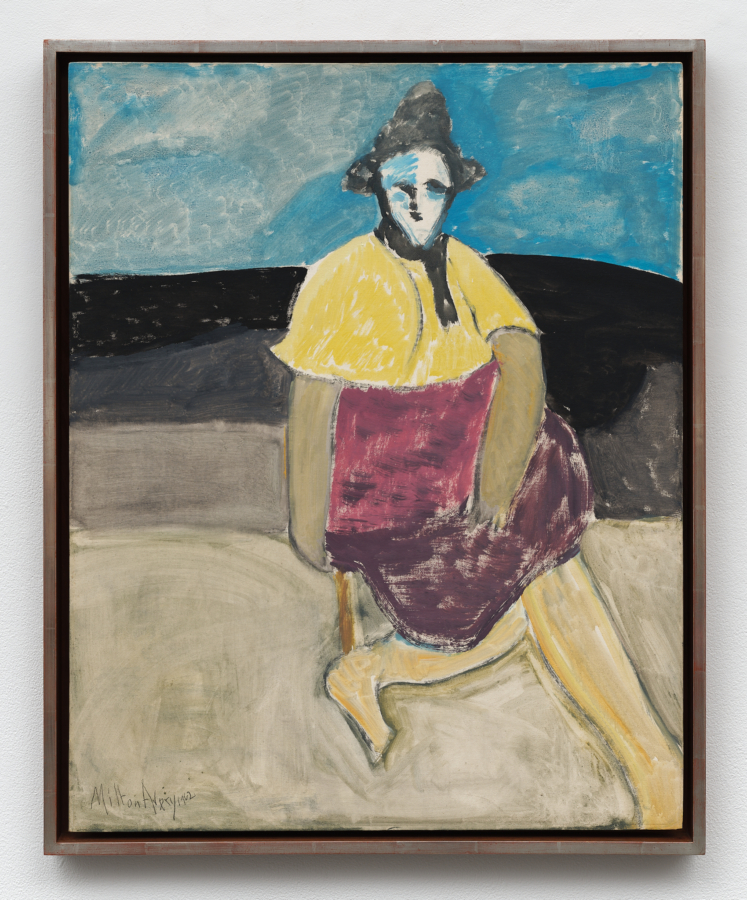Sadamasa Motonaga
May 23–July 19, 2024
Opening reception: Thursday, May 23, 6–8 pm
Karma
7351 Santa Monica Boulevard
Los Angeles
Sadamasa Motonaga
May 23–July 19, 2024
Opening reception: Thursday, May 23, 6–8 pm
Karma
7351 Santa Monica Boulevard
Los Angeles
Karma presents an exhibition of paintings by Sadamasa Motonaga, open from May 23 to July 19 at 7351 Santa Monica Boulevard.
Spanning five decades of work, this presentation introduces Los Angeles to Sadamasa Motonaga, a unique figure whose trajectory bridges contemporary Japanese Superflat painting with the existential artistic concerns of the immediate postwar era. Motonaga was born in 1922 in Japan’s mountainous Mie Prefecture. After working on the railroads and in munitions plants during World War II, the self-taught painter became a founding member of the Gutai Art Association, an avant-garde movement formed in reaction against the country’s restriction of art to nationalistic ends. As a part of Gutai, he created some of Japan’s most iconic pieces of installation art by tinting water and smoke with vibrant colors while also inventing a new style of painting using poured synthetic resin pigments. Gutai’s boundary-breaking celebration of children’s art, emphasis on physicality and play, and leveling of artistic hierarchies emboldened Motonaga to integrate the biomorphic shapes from the manga he had drawn since his childhood into his paintings, an approach that would continue until his death in 2011. Over the course of his artistic life, Motonaga’s paintings remained ever optimistic and immediate, influenced by popular culture and the avant-garde in equal measure.
Sakuhin (1965), the earliest work in the show, marks the tail end of his high Gutai period. Instructed by the movement’s leader Jiro Yoshihara to make “pictures that have never been seen before,” Motonaga turned an accidental paint spill into a signature technique. Working on the floor, he streamed highly liquid resins into each other and manipulated his canvases to control their flow. This method borrowed from the historical Japanese wet-on-wet painting technique tarashikomi, or “dripping in.” At the same time, manga remained a central influence—white oil paint slicing into the two forms in Sakuhin bisect their flowing interiors, becoming open mouths that animate the two entities. In 1966, during a yearlong stay in downtown New York on an invitation by the Japan Society, gallerist Martha Jackson introduced him to Liquitex, an acrylic paint that did not yet exist in Japan, and Motonaga, who was inspired by the use of airbrush in Pop art by people like James Rosenquist, began experimenting with spraying it onto his canvases. Untitled (1967) features a trademark Motonaga shape that resembles an upside-down letter T, or perhaps a top hat, its red contours buzzing with a corona-like aura that fades from green into blue.
Back in Japan at the end of the 1960s with his wife and young son, Motonaga published the first of what would become a suite of twenty-six illustrated children’s books starring the organic, hand-drawn characters that feature in his paintings. While his books introduced his art to a non-specialized audience, he aimed for his paintings to communicate the freedom of imagination evident in children’s drawings in a high-art context. In the painting Howa Howa (1978), twin bodies made of curved forms float above an uneven horizon line, their outlines shadowed against a subtly shifting sky. At once suggestive of manga characters and utterly abstract, these entities illustrate Motonaga’s fusion of cartooning with an avant-garde sensibility that refuses the instant revelation of meaning or narrative. In the 1990s, he returned to earlier experiments with poured paint and combined them with his signature forms, as is evident in White Linear Shape (1992) and Yellow Shape and White Flow (1993), both of which feature two-dimensional drawn shapes and free-flowing, wet-on-wet swirls.
Motonaga’s collapse of high and low, as well as his insistence on the validity of ideas drawn from manga in the realm of high art, prefigured the Superflat generation’s appropriation of Japanese popular culture and graphic arts. While Takashi Murakami was coming to prominence with his anime-influenced art at the turn of the century, Motonaga was decades-deep into his avant-garde interpretation of the static manga from his youth. In Two Yellows (1997) and White Circle with Cross Stripes (2004), the double-figure composition of the 1965 Sakuhin reemerges, even more explicitly suggestive of a pair of beings due to the minimal, looped line through each circle that suggest a mouth and an eye. Overlap is Yellow and Green (1997) features the same T-form as 1967’s Untitled, this time multiplied against a splattered red field as if they have become their own species of imagined creatures. Motonaga’s humorous, mutating characters speak of the infinite possibilities implied in freeing oneself from the tyranny of so-called adult seriousness.



